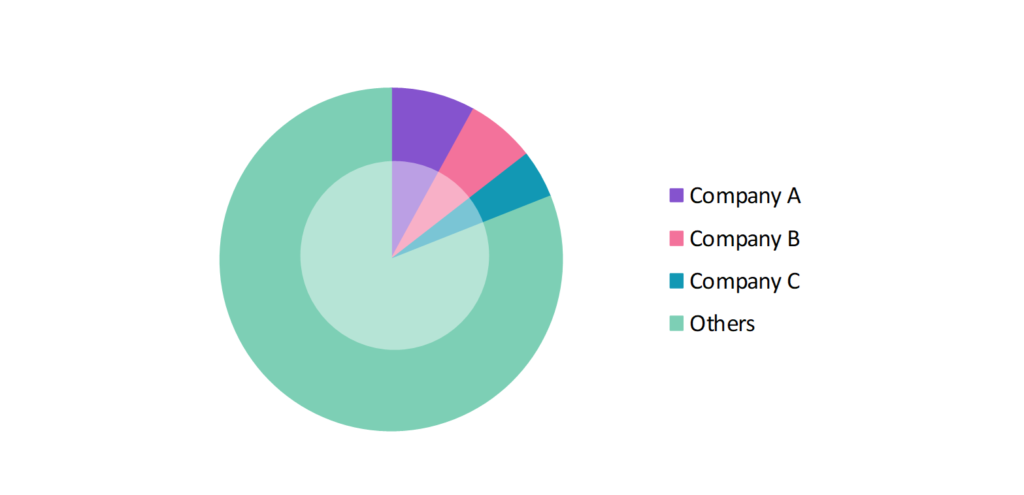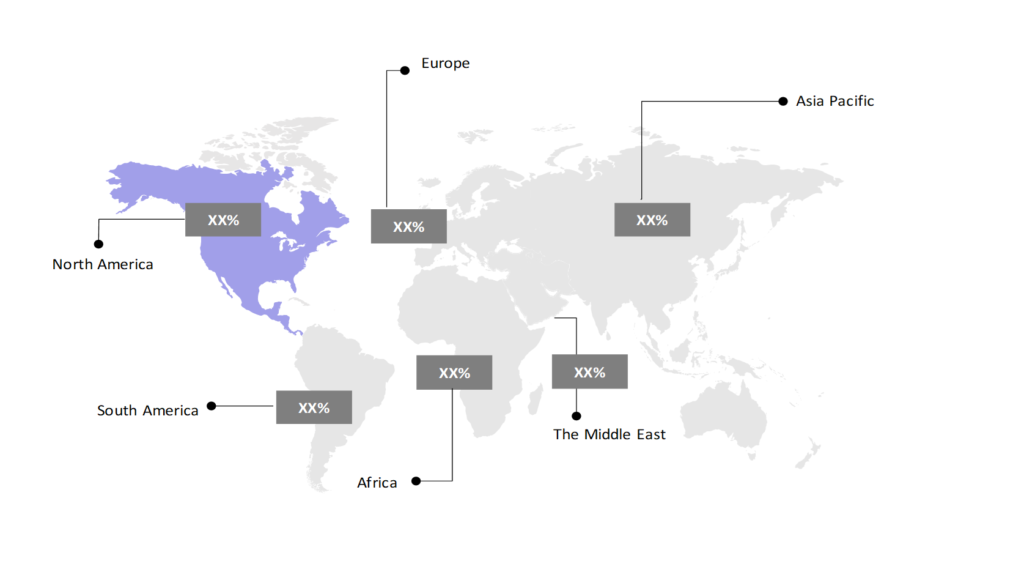Sweeteners Market: Size, Share, Trends & Forecast (2024-2029)
The market report offers a detailed analysis segmented by Product (Sucrose, Natural Sweeteners, Artificial Sweeteners, Others); by Application (Food & Beverages, Personal Care, Pharmaceuticals, Others); by Geography (North America, South America, Asia Pacific, Europe, The Middle East, Africa).
Outlook

- The sweeteners market is estimated to be at USD 114.67 Bn in 2025 and is anticipated to reach USD 134.29 Bn in 2030.
- The sweeteners market is registering a CAGR of 3.21% during the forecast period 2025-2030.
- The global sweeteners market encompasses natural and artificial alternatives to sugar, driven by health awareness and reduced sugar consumption trends. While artificial sweeteners dominate in diet products, natural options like stevia are gaining popularity.
Request a free sample.
Ecosystem

- The participants in the global sweeteners industry are actively involved in developing innovative sweeteners and expanding their product portfolios to meet growing consumer demand for healthier alternatives.
- These companies primarily focus on investing in research & development to create new sweeteners with improved taste profiles, fewer calories, and minimal aftertaste. Along with, strategic mergers and acquisitions of small vendors to diversify their sweetener offerings.
- Several important entities in the sweeteners market include Cargill, Inc.; Archer Daniels Midland Co.; International Flavors & Fragrances Inc.; Ingredion Inc.; Tate & Lyle Plc; and others.
Ask for customization.
Findings
| Attributes | Values |
|---|---|
| Historical Period | 2019-2023 |
| Base Year | 2024 |
| Forecast Period | 2025-2030 |
| Market Size (2025) | USD 114.67 Bn |
| Market Size (2030) | USD 134.29 Bn |
| Growth Rate | 3.21% CAGR from 2025 to 2030 |
| Key Segments | Product (Sucrose, Natural Sweeteners, Artificial Sweeteners, Others); Application (Food & Beverages, Personal Care, Pharmaceuticals, Others); Geography (North America, South America, Asia Pacific, Europe, The Middle East, Africa) |
| Key Vendors | Cargill, Inc.; Archer Daniels Midland Co.; International Flavors & Fragrances Inc.; Ingredion Inc.; Tate & Lyle Plc |
| Key Countries | The US; Canada; Mexico; Brazil; Argentina; Colombia; China; India; Japan; The UK; Germany; Italy; Turkey; UAE; Saudi Arabia; Egypt; South Africa |
| Largest Market | North America |
Get a free quote.
Trends
- Expansion of Plant-Based Sweeteners: The plant-based trend extends to sweeteners, with growing interest in plant-derived products such as stevia and monk fruit. These are being incorporated into a variety of food categories, including dairy alternatives, snacks, and bakery products. In 2022, Ingredion Incorporated saw an increase in demand for plant-based sweeteners from manufacturers of vegan and plant-based foods.
- Innovation in Blended Sweeteners: Blended sweeteners, which combine natural and artificial ingredients, are being developed to offer better taste profiles and improved functionality. These sweeteners provide a balance between taste and low-calorie content. In 2023, Cargill launched a new blended sweetener product line, combining stevia and erythritol for reduced-calorie sugar alternatives in beverages.
- Personalized Nutrition and Sweeteners: The rise of personalized nutrition is influencing the development of customized sweeteners that align with individual dietary needs, such as for diabetic patients or those on low-sugar diets. In 2023, DSM began collaborating with food tech companies to develop personalized sweetener solutions for consumers with specific dietary requirements.
Speak to analyst.
Catalysts
- Demand for Low-Calorie Food & Beverages: With consumers becoming more conscious of calorie intake and weight management, there is a growing demand for low-calorie food and beverages that utilize sweeteners instead of sugar. This trend is especially strong in categories such as soft drinks, snacks, and desserts. In 2023, Coca-Cola reported that its low-calorie beverages, made using aspartame and sucralose, accounted for a significant portion of its sales in response to consumer demand for healthier choices.
- Supportive Regulatory Environment: Many regulatory bodies around the world are encouraging the reduction of sugar consumption, prompting manufacturers to adopt sweeteners in their product formulations. Government guidelines aimed at curbing sugar intake are indirectly boosting the sweetener market.
- Growth in Diabetic Population: The global rise in diabetes cases is leading to an increased demand for sweeteners that do not raise blood sugar levels. Products containing artificial and natural sweeteners are becoming essential for people with diabetes, offering alternatives to sugar-laden products. In 2022, the International Diabetes Federation reported an estimated 537 million adults living with diabetes globally, boosting demand for sweeteners.
Inquire before buying.
Restraints
- Supply Chain Disruptions: Artificial sweeteners, such as saccharin and aspartame, often leave an unpleasant aftertaste, which affects consumer satisfaction. This taste issue limits their application in various food products, particularly in those that require high sensory appeal. In 2022, PepsiCo reformulated its diet soda line to reduce the aftertaste of artificial sweeteners following consumer feedback about dissatisfaction with flavor profiles.
- Cybersecurity Threats: Regulatory hurdles around the approval of new sweeteners or changes in their usage can limit market growth. Each region has different safety and health standards, which can delay the introduction of innovative sweeteners.
- Regulatory Issues: The supply chain for natural sweeteners, such as stevia and monk fruit, is vulnerable to disruptions caused by environmental factors, such as droughts and changing weather patterns. This affects the availability and pricing of these sweeteners, impacting their adoption.
Personalize this research.
Hotspot

Explore purchase options.
Table of Contents
| 1. Introduction 1.1. Research Methodology 1.2. Scope of the Study 2. Market Overview / Executive Summary 2.1. Global Sweeteners Market (2019 – 2023) 2.2. Global Sweeteners Market (2024 – 2030) 3. Market Segmentation 3.1. Global Sweeteners Market by Product 3.1.1. Sucrose 3.1.2. Natural Sweeteners 3.1.3. Artificial Sweeteners 3.1.4. Others 3.2. Global Sweeteners Market by Application 3.2.1. Food & Beverages 3.2.2. Personal Care 3.2.3. Pharmaceuticals 3.2.4. Others 4. Regional Segmentation 4.1. North America 4.1.1. The US 4.1.2. Canada 4.1.3. Mexico 4.2. South America 4.2.1. Brazil 4.2.2. Argentina 4.2.3. Colombia 4.2.4. Rest of South America 4.3. Asia Pacific 4.3.1. China 4.3.2. India 4.3.3. Japan 4.3.4. Rest of Asia Pacific 4.4. Europe 4.4.1. The UK 4.4.2. Germany 4.4.3. Italy 4.4.4. Rest of Europe 4.5. The Middle East 4.5.1. Turkey 4.5.2. UAE 4.5.3. Saudi Arabia 4.5.4. Rest of the Middle East 4.6. Africa 4.6.1. Egypt 4.6.2. South Africa 4.6.3. Rest of Africa 5. Value Chain Analysis of the Global Sweeteners Market 6. Porter Five Forces Analysis 6.1. Threats of New Entrants 6.2. Threats of Substitutes 6.3. Bargaining Power of Buyers 6.4. Bargaining Power of Suppliers 6.5. Competition in the Industry 7. Trends, Drivers and Challenges Analysis 7.1. Market Trends 7.1.1. Market Trend 1 7.1.2. Market Trend 2 7.1.3. Market Trend 3 7.2. Market Drivers 7.2.1. Market Driver 1 7.2.2. Market Driver 2 7.2.3. Market Driver 3 7.3. Market Challenges 7.3.1. Market Challenge 1 7.3.2. Market Challenge 2 7.3.3. Market Challenge 3 8. Opportunities Analysis 8.1. Market Opportunity 1 8.2. Market Opportunity 2 8.3. Market Opportunity 3 9. Competitive Landscape 9.1. Cargill, Inc. 9.2. Archer Daniels Midland Co. 9.3. International Flavors & Fragrances Inc. 9.4. Ingredion Inc. 9.5. Tate & Lyle Plc 9.6. Company 6 9.7. Company 7 9.8. Company 8 9.9. Company 9 9.10. Company 10 |
Know the research methodology.
Sweeteners Market – FAQs
1. What is the current size of the sweeteners market?
Ans. In 2025, the sweeteners market size is USD 114.67 Bn.
2. Who are the major vendors in the sweeteners market?
Ans. The major vendors in the sweeteners market are Cargill, Inc.; Archer Daniels Midland Co.; International Flavors & Fragrances Inc.; Ingredion Inc.; Tate & Lyle Plc.
3. Which segments are covered under the sweeteners market segments analysis?
Ans. The sweeteners market report offers in-depth insights into Product, Application, and Geography.
